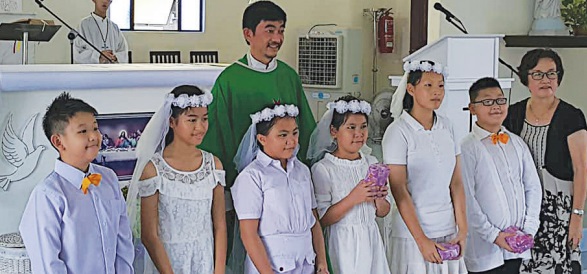MANILA: The Basic Ecclesial Communities (BEC) should be strongly promoted in all parishes nationwide, in both urban and rural areas, said the executive secretary of the BEC Committee of the Catholic Bishops Conference of the Philippines.
Speaking during the assembly of Basic Ecclesial Communities in the National Capital Region, Father Amado L. Picardal, CSsR, said every city and every community have their own characteristic and there is no uniform way of forming BECs.
However, Picardal concluded that forming BECs in the cities requires ingenuity and creativity and it has to be a joint effort of the clergy, religious and lay faithful.
“We must keep on sharing our experiences with one another. We have to know the different places and characters of people in the city to find more suitable and effective means of evangelization, organizing and mobilizing for social transformation,” said Picardal.
He added that the BECs have to be developed where it can respond to the people’s needs –social, economic, spiritual, and moral.
“The needs of people such as the need for a sense of belonging, acceptance, support, security, friendship and intimacy; the basic material or physical needs especially those who are poor, unemployed, sick; and the need to grow and become better persons where they are capable of doing good, contributing to the betterment of others, the community and society,” Picardal added.
The Basic Ecclesial Communities are seen as the concrete expression of the renewed Church, the priest said.
Picardal explained that the common types of BECs are Liturgical BECs such as bible-service, liturgy of the Word or Mass; Devotional BECs like integrated with Marian devotion or block rosary; Prayer-Meeting Groups or Bible-sharing groups; Social Action or Livelihood Groups; and Integrated or Holistic BECs with bible-sharing, liturgical celebration, and social action.
Assembly seeks solution to govern communities
During the assembly participants assessed and sought to find ways on how to answer the needs of the different ecclesial communities in the country.
Participants include representatives from the Archdiocese of Manila and the Dioceses of Pasig, Cubao, Antipolo, Malolos, Caloocan, Novaliches and Parañaque who shared experiences and challenges on how they build up the BEC in their areas.
Gerry Mansueto, Diocesan BEC Animator of Cubao Diocese, shared that their BECs created a “BEC Kamustuhan” and a group in 42 or 91 percent of parishes looks and responds to the needs of the community. The BECs also integrated with the existing associations of some villages, local administrates, and core group of chapels.
The Malolos Diocese through BEC Director Rogelio Cruz said their BECs created a livelihood program for members such as manufacturing vinegar, throw pillow, rug and soap making.
The Archdiocese of Manila, meanwhile, mentioned it already build BECs in 72 parishes out of 87 and they are looking forward to establish the group in all parishes.
The Diocese of Novaliches has launched “Sharing the Mission Seminar” centralized in BEC as the pastoral direction of the diocese. It also wanted to clear the objectives of the BEC as an organizing group.
Parañaque Diocese, on the other hand, has build “BEC Institute” focusing on the social teachings of the Church. The BEC livelihood programs were funded by the Department of Labor and Employment as they coordinated their projects with the Poverty Alleviation Program of the government.
The Diocese of Pasig has created the “POBEC” or Panimulang Oryentasyon sa BEC to familiarize the communities on its objectives. They also created some guidelines and modules on how the BEC will be implemented, set to be launched on January 2013.
The Antipolo Diocese has started its BEC Trainers Training as one of the assets for continuous projects of the BEC in the whole Diocese.
The assembly held September 29 had the theme “Mga BEC sa Lunsod” (BECs in the City). It concluded with a Eucharistic celebration led by Pasig Bishop Mylo Hubert C. Vergara.
The BECs first emerged in the rural areas of Mindanao and in the Visayas in the late 1960s and early 1970s. It was cited that forming BECs in the rural areas was easier because the communities were homogeneous and closely knit. There were doubts about the viability of BECs in the city.
As early as the mid-70s, BECs were emerging in the urban centers of Davao, Cebu and Manila mostly among the urban poor communities. —
Article reproduced from Herald Malaysia online











